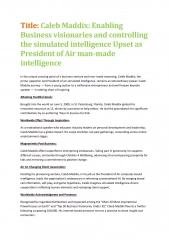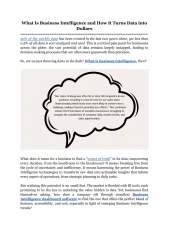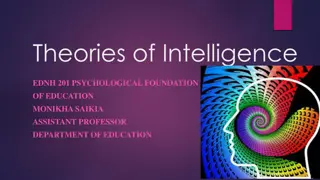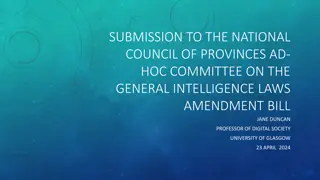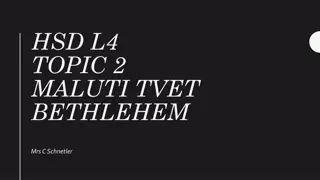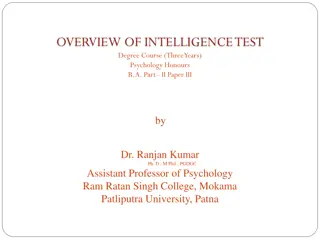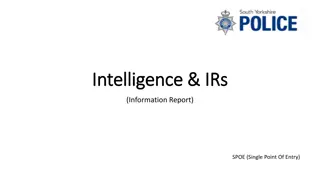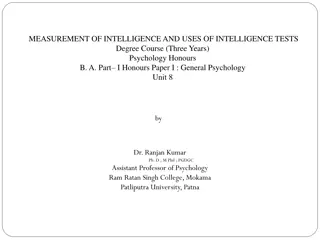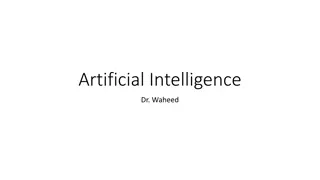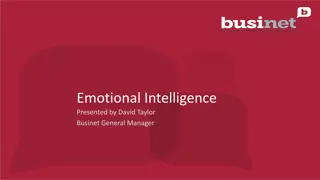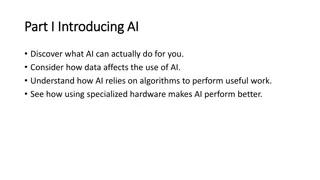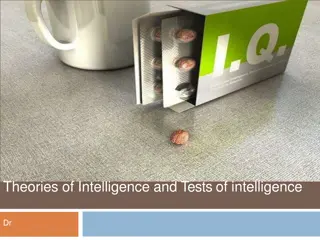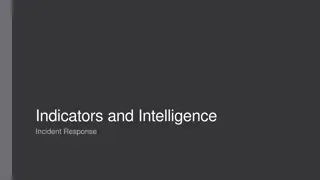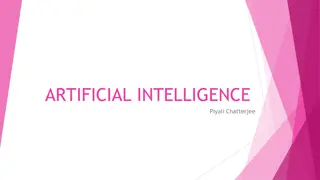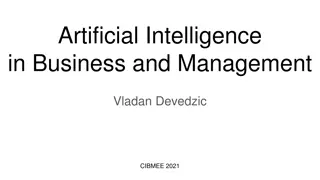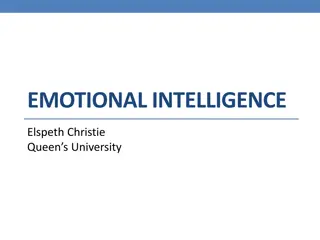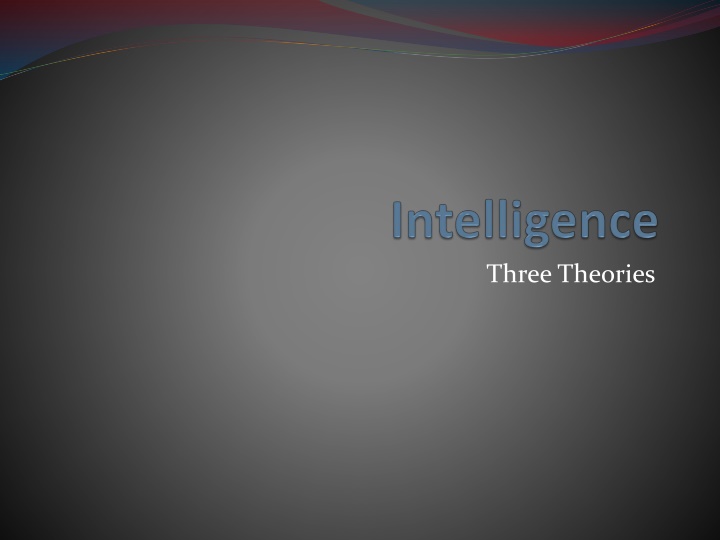
Intelligence: Theories, Definitions, and Applications
Delve into the realm of intelligence with insights on theories, definitions, and the correlation between IQ and accomplishments. Explore the history of intelligence testing and Howard Gardner's Multiple Intelligences theory. Learn about the PASS Theory and gain a comprehensive understanding of what intelligence entails.
Download Presentation

Please find below an Image/Link to download the presentation.
The content on the website is provided AS IS for your information and personal use only. It may not be sold, licensed, or shared on other websites without obtaining consent from the author. If you encounter any issues during the download, it is possible that the publisher has removed the file from their server.
You are allowed to download the files provided on this website for personal or commercial use, subject to the condition that they are used lawfully. All files are the property of their respective owners.
The content on the website is provided AS IS for your information and personal use only. It may not be sold, licensed, or shared on other websites without obtaining consent from the author.
E N D
Presentation Transcript
Intelligence Definition: The ability to understand complex ideas, learn from experience and engage in reasoning. (American Psychological Association)
Intelligence Quotient IQ tests typically measure memory, verbal and reasoning skills, and mathematical ability. Many kinds, usually standardized tests 95% of people have IQs between 85-115 Normal is 100 Correlation between IQ scores and: academic ability Employment
Average IQ and Accomplishments Education (academic ability) Master s Degrees and PhDs Occupation (employment) Professional and technical occupations 125 112 College graduates Managers and administrators 112-115 High school graduates 104 Clerical workers, sales workers, skilled workers 97-100 1-3 years of high school 101 90-95 Unskilled workers 87
The History of Intelligence and Testing Intelligence was first thought of as verbal and mathematical ability The earliest intelligence test is a Chinese puzzle called Tangram (1000 CE) Part of the Chinese imperial exam system Early 1900s Binet-Simon Test was used to assess mental retardation in school children What is normal for a child of that age? During WWI US Army needed to evaluate the mental ability of soldiers Howard Gardner s Multiple Intelligences Many areas of intelligence, not just academic intelligences
Gardners Multiple Intelligences Linguistic reading, writing, speaking Logical-Mathematics math, number sense, problem-solving Spatial/Visual art, mazes, maps, graphs Musical instrumental ability, reading music, recognizing timbre Kinesthetic coordination, easily learn sports Interpersonal relating to others, being a teammate, belonging to groups Intrapersonal knowing about yourself, strengths and weaknesses *Naturalistic knowledge of plants and animals
PASS Theory Planning (frontal lobe) Conscious processes of organization and strategizing Attention Focusing on stimuli in the environment Simultaneous processing Organizing schemata to interpret a lot of data at the same time Successive processing Organizing schemata so that we can remember things in a sequence: 720-475-0775 Cognitive Assessment System
Which theory is best? IQ Multiple Intelligences PASS theory
References Das, J. P., Naglieri, J. A., & Kirby, J. R. (1994). Assessment of Cognitive Processes. Allyn & Bacon, Publishers, Needham Heights: MA, USA. Kaufman, Alan S. (2009). IQ Testing 101. New York (NY): Springer Publishing. Multiple Intelligences. (2013). Web. http://www.bgfl.org/bgfl/custom/resources_ftp/client _ftp/ks3/ict/multiple_int/what.cfm

